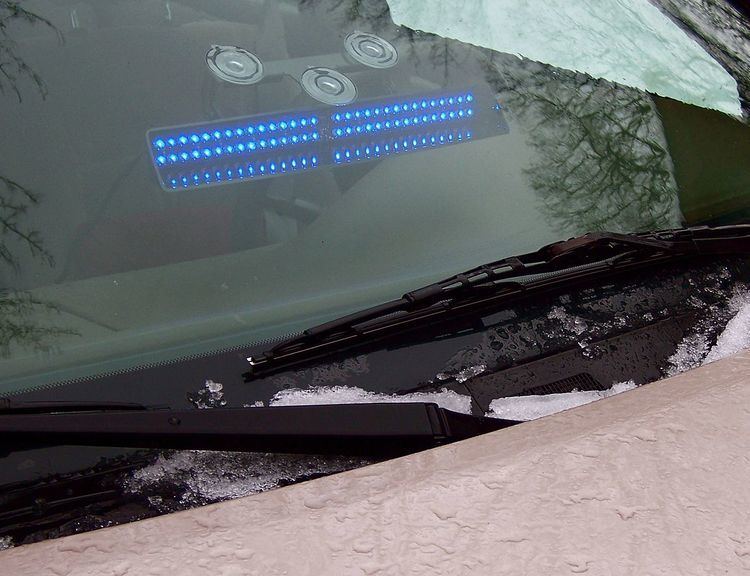 | ||
Courtesy lights are used to request right-of-way primarily by volunteer or call firefighters and emergency medical technicians (EMTs) to expedite their drive in their privately owned vehicles, to their firehouse or base. Courtesy lights do not allow the user to disobey traffic laws such as speed limit, stop signs or stop lights. Courtesy lights should not be confused with emergency warning lights used in conjunction with audible warning systems (sirens) for emergency vehicles such as police cars, fire apparatus and ambulances, nor should they be confused with warning lights as used by tow-trucks, snow-plows, construction vehicles and school buses to increase awareness especially when moving slowly or stopped in the roadway.
Contents
The term is also used to refer to the internal car light that comes on automatically when a door is opened.
Laws
A vehicle lawfully displaying courtesy lights is not an emergency response vehicle. In most states, vehicles displaying courtesy lights must still stop at stop signs, red lights, etc. and may not speed or disobey any traffic regulations. Usually, violation ticket fines are increased if the ticketed car was flashing courtesy lights. Laws vary greatly by state.
In most states, other vehicles are not required to yield to the vehicle displaying the courtesy lights, hence the name "courtesy", although laws requiring permits for those using courtesy lights vary by state.
In the state of New Jersey, for instance, users of a volunteer blue light must abide by all traffic laws including speed limit, stop signs, and red lights; however other non emergency drivers must pull over for a volunteer blue light. State of New Jersey 211th Legislature: "Nothing contained herein is intended to grant to any member of a volunteer fire company or a volunteer first aid or rescue squad any privileges or exemptions denied to the drivers of other vehicles, and such members displaying emergency warning lights and electronic horns shall drive with due regard for the safety of all persons and shall obey all the traffic laws of this State including R.S.39:4-81, provided, however, that the drivers of non-emergency vehicles upon any highway shall yield the right of way to the vehicle of any member of a volunteer fire company or a volunteer first aid or rescue squad displaying emergency warning lights or an electronic horn in the same manner as is provided for authorized emergency vehicles pursuant to R.S.39:4-92."
Police cars, fire trucks, ambulances or other emergency vehicles have sirens and red lights. On the other hand, private vehicles operated by volunteer fire and rescue squad members (with emergency vehicle identification) responding to an emergency call use blue lights. If an officer pulls a vehicle over for using courtesy lights, the driver will need to provide sufficient identification proving their Emergency Personnel status—badge, ID number, ID card—and their reasoning for usage of courtesy lights.
Colors
Traditionally, blue lights are used for both firefighters and EMTs. However, some states (especially in the Northwestern US) use Green lights for both firefighters and EMTs. Other States (most notably New York) use Blue for firefighter and Green for EMTs. White has traditionally been allowed with Blue or Green; however, in recent years, certain states (Pennsylvania, New York) have become more restrictive. Rarely, red is used for courtesy lights. Texas doesn't specify what colors for volunteer ems/fire as far as the state, but restricts the use of red to them, but they can also use a combination of red, red/blue. Also local laws and department policies might restrict the color of these lights.
